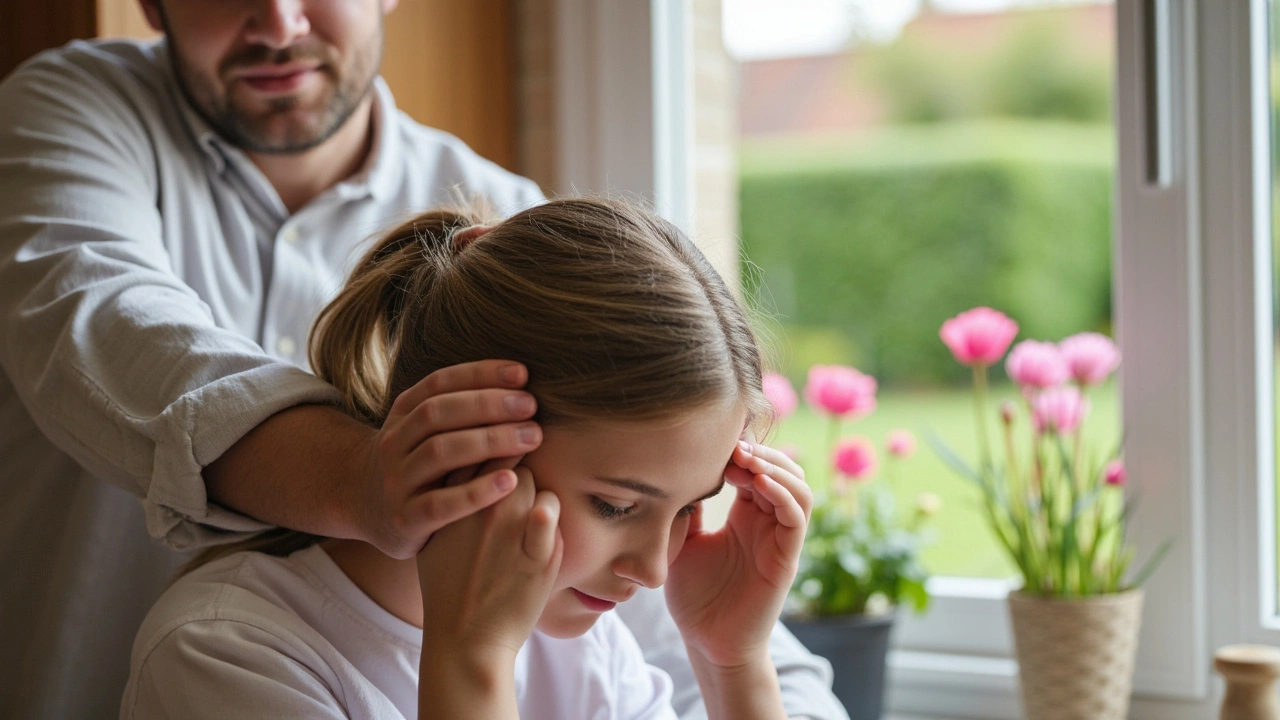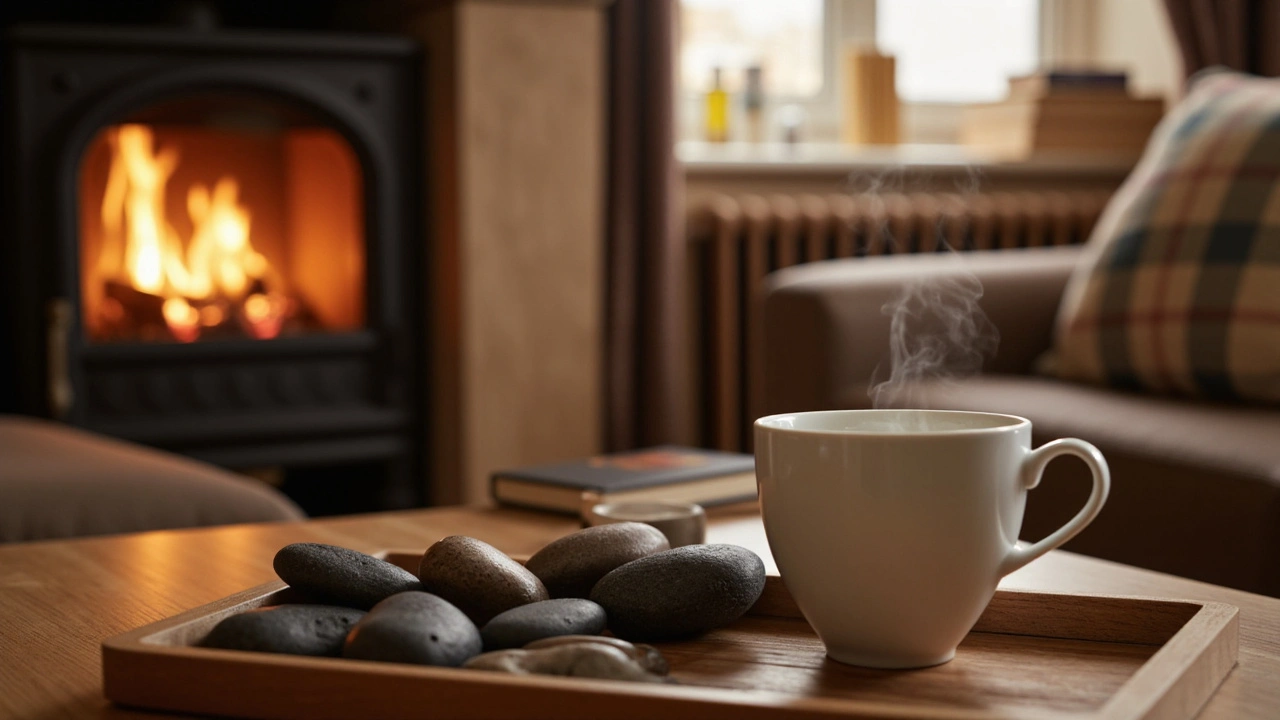Head Massage: Simple Relief for Headaches and Migraines

Headaches hit hard. Migraines are brutal. Most people reach for painkillers, but what if you could shake the pain off with just your hands? Head massage doesn’t get enough credit, yet it’s one of the oldest and simplest ways to calm your nervous system and melt away those pounding aches.
Ever notice how rubbing your temples or the back of your neck just feels right when your head hurts? That’s not just in your head—it’s actually helping. Touch triggers your body to release endorphins, those little feel-good chemicals that lower your pain. Massaging your scalp, temples, or neck can boost blood flow and loosen up tense muscles, making your whole head feel lighter within minutes.
No special oils, fancy tools, or even help from someone else required. You can get started while sitting on your couch right now. Just your fingers, a little patience, and knowing exactly how and where to press—that’s all you need.
- Why Head Massage Works for Pain
- How to Give Yourself a Head Massage
- Tips for Safe and Effective Relief
- What Science Says About Head Massage
Why Head Massage Works for Pain
You probably already know that a head massage feels good, but there’s real science behind why it helps with headaches and migraines. When you massage your scalp or temples, you increase blood flow in the area. More blood means more oxygen and nutrients are getting to those irritated nerves and muscles, helping them relax and recover.
That’s not all. Headaches and migraines often come from tense muscles, especially around your neck, shoulders, and temples. Pressure from stress, staring at screens, or even sleeping weirdly can bunch those muscles up. When you rub and knead these spots, you loosen up the tension and even encourage your brain to pump out natural painkillers like endorphins and serotonin.
There’s also something called the “gate control theory” of pain. Basically, your nerves can only handle so many signals at once. If you’re rubbing your head, the movement and pressure send fresh signals to your brain, which can help crowd out the pain messages. That’s why you might notice a throbbing headache start to fade while you’re massaging.
Studies back this up, too. For example, a 2016 study at the University of Auckland followed chronic migraine sufferers over six weeks. Those who got regular scalp massages cut their headache days in half compared to folks who didn’t. Participants also reported sleeping better and feeling less anxious overall.
| Benefit | What Actually Happens |
|---|---|
| Better blood flow | Feeds oxygen to tense muscles, speeds healing |
| Muscle relaxation | Loosens knots, reduces tension headaches |
| Natural pain relief | Triggers body to release endorphins and serotonin |
| Less stress | Lowers heart rate and blood pressure, promotes calm |
One more thing—massaging your head can also dial down stress. Slower breathing and a few minutes of gentle touch reel in your fight-or-flight system, helping you feel chill. It’s these overlapping effects—muscle relaxation, better blood flow, pain signals getting drowned out by touch—that make head massage a smart move for beating headaches and migraines.
How to Give Yourself a Head Massage
If you want real relief from headaches, learning to give yourself a head massage is life changing. You don’t need training or special products. Just your hands and a few easy moves will do the trick. Here’s how to get started at home.
The best time for a massage is as soon as you feel headache or migraine signs—don’t wait for the pain to get worse. Get comfy. Sit or lie down where your back and neck are supported. Take a few slow breaths to help your body relax.
- Start at Your Temples: Use your first two fingers and press them gently into your temples. Move them in slow, small circles. This area is a go-to spot for tension and tends to give quick relief.
- Work the Scalp: Spread your fingers wide and place them all over the top of your head. Gently squeeze and release your scalp like you’re kneading dough. Studies show this boosts circulation, which helps deliver more oxygen to the brain and ease pain.
- Focus on the Base of the Skull: Right where your skull meets your neck, use your thumbs to make small, upward circles. If you get migraines, this spot is often super tight. Extra pressure here (as much as feels good) can release tension headaches fast.
- Hit the Forehead: Press your fingertips into the middle of your forehead and make small circles out toward your hairline. This move relaxes facial muscles, especially if you clench your jaw or squint during headaches.
- Don’t Forget the Neck: Use both hands to gently squeeze and rub the sides and back of your neck. Relieving neck tension can be a game changer for headache and migraine relief because stiff necks often trigger head pain.
Stick with light to medium pressure. Pushing too hard can backfire, leaving you more tense. Try each move for about 30 seconds, and repeat any area that feels especially sore. You can do the whole routine in about five minutes, or just use one technique when you’re stuck at your desk or on the go. The main thing is knowing that a quick, at-home head massage can be a real difference-maker when it comes to easing head pain.
Want an extra boost? Some people like using a little coconut or peppermint oil, but it’s totally optional. If you notice any dizziness, stop right away. And if your headaches stick around for more than a few days or keep coming back, it’s smart to check in with your doctor to rule out anything serious.

Tips for Safe and Effective Relief
There are a few things you should know to get the most out of a head massage, especially if you want to tackle headaches or migraines without causing more discomfort. Even a gentle massage can make a difference, but doing it wrong—like pressing too hard or not being mindful—can do more harm than good.
Here’s how you keep it safe and useful every time:
- Always wash your hands before you start. Clean hands mean no extra germs on sensitive skin or scalp.
- Sit in a comfy chair or lean against something supportive. No one wants to pull a muscle trying to relax.
- Start slow. Use your fingertips—never your nails—to make small circles on your scalp, temples, and the base of your skull.
- Stay gentle. Pushing too hard might leave your head sore. If you feel pain, lighten up right away.
- Breathe deep. Focusing on your breath while massaging helps your muscles relax faster.
- Limit your session to about 5-10 minutes. Studies show that sessions longer than 15 minutes might make headache symptoms worse for some people.
- If you’re caring for someone else, always check in with them about pressure and comfort. Everyone’s pain threshold is different.
If you get frequent migraines or have any medical condition, ask your doctor if self-massage is okay. Head massage isn’t a replacement for medication if you need it, but it’s a pretty handy extra tool.
Here’s a quick look at what research and reports suggest actually works:
| Technique | Benefit | Ideal Time |
|---|---|---|
| Light circular scalp massage | Reduces muscle tension and boosts blood flow | 5-10 minutes |
| Temple massage | Relieves pressure around the eyes and temples | 1-3 minutes |
| Base of skull pressure | Soothes neck pain and triggers relaxation | 1-2 minutes |
And one last tip—stick to using your fingers. Tools can be tempting, but they can easily cause too much pressure or irritation, especially if you’re new to head massage.
What Science Says About Head Massage
You’re probably wondering: does head massage actually work, or is it just another feel-good trick? Science has a few solid answers. Plenty of studies have dived into how head massage affects people who struggle with headaches and migraine remedy seekers looking for something that’s not just pills and ice packs.
A small 2016 study from Brazil found that folks getting regular scalp massages saw fewer migraines and said their pain levels went down. The theory is pretty simple: massaging your scalp boosts blood flow and gets your nervous system to chill out, which lowers how much pain you actually feel. That’s not magic—it’s just your body’s biology doing its thing when you give it a chance.
Another cool thing? Massaging your head helps drop your stress hormones. A Japanese study tracked people who had head massages a few times a week and found their levels of cortisol (the stress hormone) went down. Less stress means fewer tension headaches, so it’s a chain reaction you can actually control.
Doctors and researchers also talk about how gentle touch, like a basic head rub, can switch your body out of "fight or flight" and into "rest and digest" mode. That calmer vibe alone can knock pain down a notch and help you sleep—something migraine sufferers really need.
No, it’s not a cure-all. It won’t erase every migraine, especially the really nasty ones. But more and more clinics now teach patients simple, practical head massage techniques as part of a plan for keeping headaches in check. It works even better if you combine it with stuff like regular sleep, hydration, and tracking your migraine triggers.



